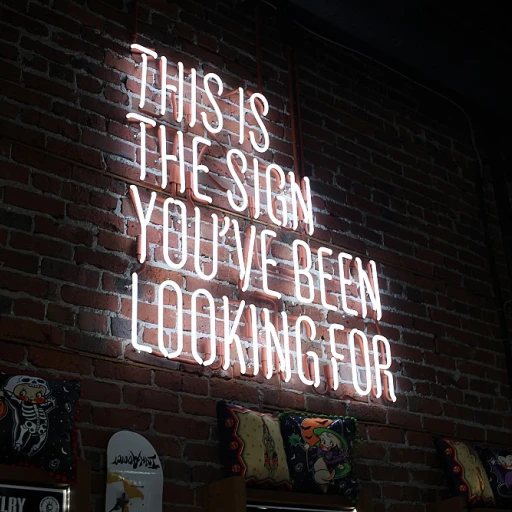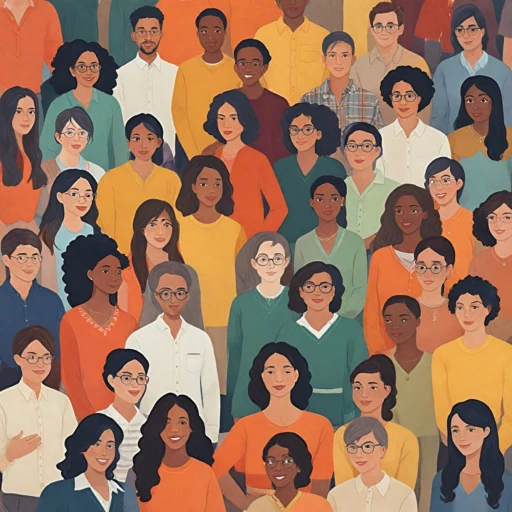Unpacking Gender Identity: A Primer for Strategic Thinkers
Exploring the Spectrum: Gender Identity in the Workplace
The term 'gender identity' is a vibrant tapestry interwoven with the threads of social, psychological, and cultural experiences that define how individuals perceive themselves and are perceived by society. In the confines of the business arena, comprehending employee engagement is no longer just about wellness programs or team-building activities; it delves into recognizing the multifaceted nature of gender identity and its direct impact on strategic operations.
According to the World Health Organization, 'gender' encompasses the roles, behaviors, activities, and attributes that a given society considers appropriate for men and women. The American Psychological Association furthers this definition, explaining gender identity as one's deeply-felt sense of being male, female, a blend of both, or neither.
Shaping the Narrative: Diverse Gender Identities
Ranging from transgender, nonbinary, to genderqueer, the spectrum of gender identities is as diverse as the people who embody them. Children begin to develop gender identity by the age of three, as noted by the American Academy of Pediatrics. This complex tapestry continues to evolve through an individual's life. For instance, the term 'cisgender' refers to people whose identity matches the sex they were assigned at birth, whereas 'transgender' pertains to those whose identity differs from that assignment.
Embracing this diversity, businesses have the opportunity not just to acknowledge, but champion a kaleidoscope of identities that can enhance creative solutions and market reach. However, navigating this spectrum requires precise strategies to encourage openness and equity within corporate culture.
Data Speaks: The Impact of Gender on Business Performance
Progressive gender inclusivity isn't just ethically sound—it's economically savvy. Data from numerous studies indicate that gender-diverse companies are more likely to outperform their less inclusive counterparts. A McKinsey report reveals that companies in the top quartile for gender diversity on executive teams were 25% more likely to experience above-average profitability than companies in the lowest quartile.
Moreover, a global analysis by the American Psychological Association showcases how recognition and support of gender diversity contribute fundamentally to an individual's psychological health—a factor that's inextricably linked to performance and productivity.
The Lexicon of Identity: Clarifying Terms and Concepts
Deploying the correct terminology is vital for fostering an environment of respect and inclusion. Terms like 'gender dysphoria,' 'gender expression,' and 'sexual orientation' are not interchangeable but describe distinct aspects of a person’s experience. 'Gender dysphoria' involves a conflict between an individual’s assigned birth sex and gender identity, often leading to significant distress. 'Gender expression' reflects how an individual presents their gender externally, which can include behavior, clothing, haircut, and voice. Importantly, 'sexual orientation' pertains to whom someone is attracted to and is separate from gender identity.
Understanding these distinctions is not just a matter of semantic precision—it's a strategic step towards building a workforce that can thrive on authenticity and mutual respect, translating personal comfort into professional success.
The Intersection of Gender and Market Dynamics
Decoding the Gender Influence in Consumer Behavior
Understanding the diverse layers of consumer identity is pivotal for strategic business growth. With recent data revealing that 85% of buying decisions are influenced by women, acknowledging gender's role on market dynamics becomes a top priority for companies. This isn't just about men or women but spans across the spectrum of gender identities and how these impact shopping patterns.
Gender-Inclusive Marketing: Beyond Pink and Blue
Market strategists are recognizing the obsolescence of traditional gendered marketing. The era of 'pink for girls and blue for boys' is being replaced with a dynamic approach that caters to gender expression and gender roles. Take, for example, toy companies like LEGO's commitment to gender-neutrality in their products which has shown a positive uptick in brand perception and sales figures.
Emerging Consumer Segments within Gender Narratives
Companies are now witnessing the rise of consumer segments that align with varied gender identities. The purchasing power of the LGBTQ+ community, worth billions, has prompted brands to align their offerings. Reports by the World Health Organization and observations from market analysts like Michael J. Ryan validate this shift in the economic landscape.
Case in Point: Accessibility Challenges and Opportunities
Gender nuances also reflect in the digital environment. Studies show that universal design principles boosting accessibility for transgender individuals can also lead to broader market capture. This inclusive ethos is just one of the ways that gender considerations are reshaping user experiences and creating diverse touchpoints for engagement.
Gender-Diverse Packaging: An Unspoken Conversation Starter
Product packaging, often the first physical touchpoint with consumers, offers an understated yet powerful opportunity for gender inclusivity. A pivotal report by the American Psychological Association supported the concept of non-binary design in packaging, highlighting that subtleties in design can appeal broadly, effectively speaking to an ever-evolving customer base.
Brand Loyalty Anchored in Gender Perception
Moreover, gender perception resonates deeply with brand loyalty. A recent survey by the American Academy of Pediatrics linked inclusive advertising and branding strategies directly to customer loyalty, especially among younger generations who overwhelmingly support gender inclusivity.
Masculine vs. Feminine Branding: Stereotypes on Trial
The historic divide in branding strategies between 'masculine' and 'feminine' products is under scrutiny. Progressive brands are taking a more nuanced approach, understanding that attributes historically associated with one gender can appeal broadly. Campaigns deconstructing these stereotypes not only garner media attention but may also lead to a more engaged customer base.
Gender Equality as a Growth Accelerator
Capitalizing on Gender Diversity for Organizational Growth
Statistical insights reveal a compelling narrative; companies standing at the forefront of gender equality often see a substantial uptick in their performance. A renowned McKinsey report highlights that firms with gender diversity on their executive teams are 21% more likely to experience above-average profitability. This gender-linked profitability correlation underscores the strategic advantage of fostering an equitable environment.
Expert Voices on Gender Balance Benefits
Industry thought leaders, such as Michael J. Ryan, advocate the economic imperative of embracing gender equality. It resonates with the World Health Organization’s stance on sustainable legacy and innovation, reflecting gender balance as not just a moral directive, but a foundational element of successful business strategy.
Driving Revenue through Inclusive Product Offerings
A case in point is the burgeoning beauty and fashion industry, which has seen a surge in brands adopting gender-neutral product lines, tapping into an unaddressed market segment. This strategic pivot is not merely a socially responsible move but a revenue-generating tactic that speaks to the growing acknowledgment of diverse gender identities.
Understanding the Gender Equality Dividend
Research from the American Psychological Association conveys that inclusive policies and practices attract a wider talent pool. This in turn fuels innovation, engenders employee engagement, and enhances company reputation – essential components of the gender equality dividend that propels organizational growth and industry leadership.
Quantifying the Societal Impact of Gender-Considerate Strategies
On the societal front, the ripple effect of gender-inclusive strategies extends far beyond corporate walls. It promotes human rights, supports sexual and reproductive health, and paves the way for more resilient economies, aligning with the United Nations Sustainable Development Goals for gender equality.
Case Study: Rebranding with Gender Fluidity
Refreshing Brand Narratives with Inclusivity
Strategists and marketers understand that brand evolution is not just a business necessity; it's a reflection of social progression. In recent times, one particular aspect that brands have increasingly chosen to address is gender fluidity. This isn't about jumping on a trend for the sake of staying relevant. Instead, it's about recognizing and validating the spectrum of human identity which in turn fosters loyalty among consumers who value inclusivity. For instance, the NHS recognizes the complexity of gender dysphoria, broadening societal understanding and acceptance.Blurring Gender Lines in Product Design
Gone are the days when pink was for girls and blue was for boys. Today, businesses embrace the rainbow, creating products that defy traditional gender roles. Anne Fausto-Sterling, a renowned gender studies expert, argues in her works that binary distinctions are far too simplistic to capture the rich variations in human sex characteristics. More and more, products are becoming gender-neutral, opening up markets and reaching out to a broader audience, including nonbinary and transgender individuals. It's a strategic move that is not only ethically sound but also embraces the vast tapestry of human experiences.Advertising That Celebrates Diversity
Advertising campaigns are the frontlines of a brand's engagement with the public. In the digital age, every tweet, every ad, speaks volumes about a company's stance on social issues. Campaigns that celebrate diverse gender identities resonate with audiences far beyond sales figures. They become part of a societal conversation, contributing to progressive change. The World Health Organization (WHO) and the American Psychological Association (APA) both provide extensive insights into the importance of affirming various gender identities for overall health and well-being.Measuring the Impact of Inclusive Branding
The strategic incorporation of gender fluidity into branding isn't just a matter of principle; it's backed by compelling data. Reports suggest that gender-diverse companies are 15% more likely to outperform their peers. Take a brand that has eschewed the male/female dichotomy in favor of a more inclusive approach; the statistics on customer satisfaction and brand loyalty often reflect an uptick. Similarly, Bradley SJ et al. highlight in studies that recognizing gender diversity can reduce mental health risks, which in turn impacts employee productivity and engagement positively.Case Studies: Emblematic Shifts in Corporate Branding
Crucial case studies offer concrete examples of gender fluidity in branding. One significant instance is a high-end fashion label that expanded its market share by launching a unisex line which blurred the lines between masculine and feminine wear. Such cases reveal the potential for growth through inclusive strategies. Judith Butler's theories on gender performativity underscore the potential power such strategic moves have in shaping public discourse and consumer behavior.In conclusion, embracing gender fluidity in branding is a strategic business decision with far-reaching consequences. It is no longer a question of 'if' but 'how,' and the brands that are swift to adapt are reaping the benefits of a diverse and loyal customer base. As the conversation around gender identity gains more traction, companies that are strategically positioned at this intersection of inclusivity and business will lead the charge into a more equitable future.Through the Looking Glass: Gender Issues in Corporate Leadership
A Closer Look at Gender Disparity in Corporate Hierarchies
Peering into the corporate world's leadership landscape, one cannot overlook the influence of gender on career progression and representation. Despite progress towards inclusiveness, significant disparities persist in top-level management across various industries. One area this is particularly evident is in the notorious 'glass ceiling' as cited by a study from McKinsey & Company, which found that women account for only 21% of C-suite executives.
Female Leadership: Breaking the Statistics
Transitioning beyond mere statistics, it's essential to recognize the names and narratives that reshape these figures. Prominent figures like Mary Barra of General Motors and Ginni Rometty of IBM have set powerful precedents in industries historically dominated by men. Their experiences elucidate the unique challenges and contributions women bring to leadership roles, embodying the term female empowerment.
Understanding Gender Identity in Executive Roles
The conversation on gender identity goes beyond the binary notion of male versus female, introducing a spectrum that includes transgender and nonbinary individuals. The American Psychological Association provides guidance on this evolution, acknowledging the diverse experiences that shape leadership styles and workplace dynamics. As corporate norms shift, so do the strategies needed to foster a truly inclusive environment.
The Impact of Gender-Conscious Leadership Development
When it comes to nurturing promising talent, gender-conscious approaches are becoming increasingly important. Businesses that prioritize diversity in leadership development programs tend to report more innovation and better decision-making outcomes, according to studies conducted by BCG. It illustrates that a diverse leadership team isn't merely a metric of equality but a strategic asset.
Navigating the Gender Health Gap in Employee Benefits
Exploring the Impact of Gender Inclusivity in Employee Health Benefits
Workplace health benefits have traditionally been designed with a binary perspective of gender, often overlooking the unique health needs of the diverse spectrum of gender identities. As strategic thinkers in the business world underscore the importance of comprehensive health benefits, it’s evident that gender-inclusive health policies could be the keystone to both employee wellness and organizational growth.
Expert Insights into Gender-Specific Health Needs
Gender differences in health needs are not merely about reproductive health. According to the World Health Organization, women are more likely to experience chronic health conditions, mental health issues, and are often underrepresented in clinical trials. Conversely, men are less likely to seek health care and have higher mortality rates for the same diseases. Transgender individuals face even greater disparities, with studies showing increased risks of mental health disorders, substance use, and barriers to accessing healthcare services.
The Business Case for Gender-Inclusive Benefits
Companies embracing gender-inclusive health benefits often see a reduction in employee turnover and an increase in job satisfaction and productivity. A report by McKinsey Global Institute found that advancing women's equality could add $12 trillion to the global economy by 2025. Acknowledging the spectrum of gender identities and catering to their specific health requirements isn't just ethical; it's economical.
Implementing Gender-Inclusive Benefit Strategies
Adopting a more gender-inclusive approach to employee benefits requires meticulous planning and a thorough understanding of gender-related health issues. This might include extending reproductive health benefits to trans men or providing mental health support addressing the unique stressors faced by nonbinary individuals. The American Academy of Pediatrics has highlighted the importance of culturally competent healthcare providers in addressing the needs of LGBTQ+ youth, a principle that equally applies to adult employee health benefits.
Learning from Leaders on Health Inclusivity
Some forward-thinking companies have already set benchmarks in health inclusivity, ensuring coverage for gender reassignment surgeries and hormone therapies for transgender employees. Tech giants in Silicon Valley are often lauded for their comprehensive health plans that include fertility treatments, while some multinational corporations provide mental health days as a part of their benefits package.
Conclusion
Closing the gender health gap in employee benefits isn't just about fairness; it's about recognizing the diverse nature of human health and responding strategically. As companies increasingly compete for top talent, those that invest in gender-inclusive health benefits will position themselves as employers of choice, fostering a culture that values the well-being and authenticity of all employees.
Gender in Global Perspective: Adapting Strategies for Diverse Cultures
Recognizing the Rich Tapestry of Gender Across Cultures
Gender, an entity as personal as it is social, takes on varied dimensions across different cultures. For companies expanding into new territories, a keen understanding of these dimensions is crucial. The World Health Organization emphasizes the influence of societal factors on gender roles, and this influence extends to business practices and consumer behaviors. Companies that fine-tune their strategies to respect and reflect the gender expressions within their markets can potentially unlock new levels of engagement and loyalty.
Expert Insights on Gender Development
Developmental psychologists, such as Anne Fausto-Sterling, suggest that varying cultural contexts shape gender development, which in turn influences consumer preferences and workforce expectations. This development is nuanced, encompassing more than the binary of female and male, to include transgender and nonbinary identities, terms increasingly recognized in both social and legal discourse across the globe. Recognizing gender beyond the binary can inform more inclusive marketing strategies and workplace policies that resonate with a broader audience.
International Case Studies of Gender-Informed Strategy
In countries like Canada and the United States, initiatives are underway that challenge traditional gender roles and inclusivity spans beyond women and girls. Companies like those mentioned in the American Psychological Association's reports are leveraging these challenges to innovate. For instance, they are adopting gender-neutral language and showcasing diverse gender identities in their branding efforts. These strategic decisions are not just about social responsibility; they aim at tapping into new markets and nurturing a culture of inclusivity internally.
Fostering Gender Equality Across Borders
A global survey by the American Academy of Pediatrics highlights the importance of gender equality in physical and mental health outcomes. Businesses contributing to this egalitarian approach see benefits in employee well-being and, by extension, organizational performance. A health plan that recognizes the full spectrum of gender identity, including the needs of transgender individuals, not only addresses a critical human rights issue but also positions a company as an employer of choice in increasingly competitive international labor markets.
Adapting to Local Norms While Upholding Universal Values
Adapting to local gender norms requires sensitivity and depth. For instance, transgender rights are recognized differently in various cultures and can influence workplace law and policy. The American Psychological Association suggests a nuanced approach to cultural competence that supports individual identities while respecting local customs. Companies successful in maintaining a balance between global standards and local practices find greater success in their international operations.
Controversies and Challenges in Global Gender Dynamics
It's not without challenges, though. In some parts of the world, government and social policies do not align with progressive views on gender identity. Cases like that of David Reimer, referenced by the American Psychiatric Association, reveal the complexities involved in navigating gender identity controversies. Companies operating in less inclusive environments must tread a careful path, upholding human rights while respecting local laws and cultural sentiments.
Summarizing the Need for Culturally Skyward Gender Strategies
In conclusion, gender as a strategic consideration must be approached with both global insight and local finesse. Incorporating an understanding of gender in its myriad forms into corporate strategy offers a conduit to cultural resonance and business innovation. It requires continuous research, adaptability, and a commitment to equal rights. Whether it's considering the linguistic implications of gender or recognizing diverse health needs, companies that respect the gender narrative of their international audiences pave the way for more inclusive—and ultimately successful—operations.
The Future of Identity: Anticipating Shifts in Gender Narratives
Exploring Emerging Gender Constructs
As strategic thinkers, we're always on the lookout for the next shift that could redefine the playing field. The concept of gender, often thought to be a fixed aspect of identity, is evolving at a rapid pace. Today, understanding gender goes beyond acknowledging biological sex assigned at birth; it entails a complex interaction of roles, expectations, and expressions that can deeply influence personal and societal dynamics. A recent study by the American Psychological Association indicates that more Americans are now recognizing the spectrum of gender identities, which range from male and female to transgender and nonbinary.
Insights on the Spectrum of Identities
With terms like 'gender identity', 'gender dysphoria', and 'gender expression' entering everyday dialogue, it's evident that our language is adapting to recognize a diversity of experiences. The World Health Organization has underscored that gender interacts with a host of other social determinants to impact an individual's health outcomes, further revealing the intersections between gender and broader social issues. As businesses ponder the future of identity, inclusivity becomes a strategy, not just a statement of values.
Spotlight on Gender Identity Developments
Annually, reports surface highlighting the shifting trends in how people experience gender. One poignant narrative comes from the story of the late David Reimer, which challenged the notion that gender identity is solely determined by biology. Meanwhile, studies such as those led by Michael J. Ryan, an expert in sexual selection, add scientific weight to the understanding of gender as a biological and social construct. These insights suggest that businesses can no longer afford to ignore the rich tapestry of human identity in their strategic planning.
Gender's Influence on Policy and Product Innovation
Gender identity isn't just a conversation for HR departments; it's making waves in product development, marketing strategies, and customer engagement. Some brands are already making headlines for embracing gender-neutral designs, with industry analysts predicting this market will continue to grow. The narratives around gender also push for policies that acknowledge and protect the rights of individuals across the gender spectrum, impacting everything from restrooms to healthcare coverage. As documented by organizations like the Human Rights Campaign, companies are responding to these developments with more inclusive workplace policies.
Case Studies in Gender Narrative Evolution
Case studies from companies such as The Johns Hopkins Hospital, which has a comprehensive Center for Transgender Health, illustrate how recognizing and addressing diverse gender identities can translate to improved services and bolstered reputation. Another valuable example is the approach taken by the American Academy of Pediatrics on the development of gender identity, which encourages support and understanding for transgender and nonbinary children. When companies take heed of such insights and adapt their strategies accordingly, they not only foster inclusivity but also position themselves as forward-thinking leaders.
Charting A New Course in Gender Understanding
As the tapestry of what defines gender continues to expand, those at the strategic helm of businesses must prepare for a future where gender narratives will influence everything from talent acquisition to customer experience. Leaning on the wisdom of experts like Judith Butler, whose work on gender performativity has paved new paths in understanding identity, corporations can recalibrate their compasses to navigate this new terrain thoughtfully and innovatively. The question no longer revolves around why gender inclusivity matters, but how quickly businesses can adapt to its evolving narrative.














